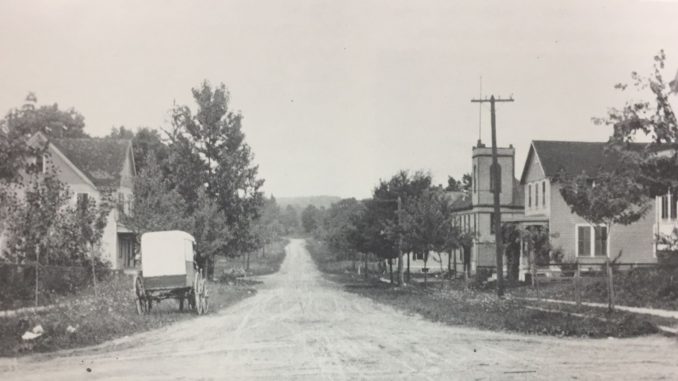
PARK RIDGE, N.J.—In 1894, citizens met on the second floor of Foresters’ Hall on Kinderkamack Road (opposite Madison Avenue) to cast their votes, 95–49, for Park Ridge to break away from the Township of Washington to form a borough.
The move became official 125 years ago this week, on May 15, 1894.
On June 12 the election of the first mayor took place, also at Foresters’ Hall. Park Ridge’s male population (only men could vote in elections in those days) came out in full force to cast their ballots in what was an exceedingly contentious election.
The choices for mayor highlighted the ideological divide that existed in Park Ridge at the time. There was the People’s Party, whom the opposition dubbed “The Hayseeders,” the population of old farming families that wanted to keep life as it was and who had been opposed to incorporating as a borough. Their choice for mayor was Dr. Henry C. Neer, the local physician. Then there was the Citizens’ Party, the newly planted population of commuters who favored better schools and expanded services. Their choice for mayor was James Wield, a bobbin manufacturer.
Election Day was an intense affair, and the coverage even made it into New York newspapers.
The Evening World reported on the day of the vote, “Foresters’ Hall is the scene of the greatest excitement ever witnessed in this place during an election. An election for borough officers is being hotly contested between the boroughites and anti-boroughites today.”
The report continues, “Both parties claim fraud and irregularity, some votes having been refused this morning and others having been accepted from men who were clearly not entitled to vote. It was said that early this morning votes were taken in a hat and dumped miscellaneously in the box, as officers were not able to turn the crank. At this writing the boroughites concede defeat, but there may be a change this afternoon.”
In fact, neither side knew which one was successful until the last ballot was counted. John P. Herring was the last man to vote. He voted the “Hayseed” ticket and Dr. Neer was elected by a single vote.
The World reported that Dr. Neer’s friends were so jubilant over his success that they went to Rockland County, retrieved an old Revolutionary War cannon, brought it home, and shot it off repeatedly in downtown Park Ridge.

Neer’s term ended up the briefest in borough history. The Citizens’ Party contested the result of the election and had the vote overturned. A new election took place, and this time Wield was declared the winner.
“The citizens here celebrated the election of James H. Wield as the first mayor of Park Ridge by a torchlight parade,” The World reported on Aug. 11, 1894. “Headed by a band and drum corps, [they] marched to the residence of Mayor Wield and tendered him a serenade.”
Neer ended up succeeding Wield, serving as mayor the following year, 1895–1896.

